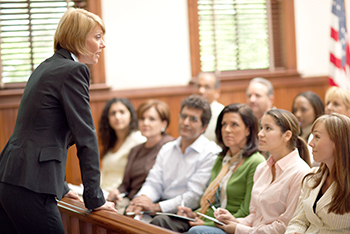This CSAFE Center Wide Meeting Webinar was presented by Dr. William (Bill) Thompson from University of California, Irvine on November 30, 2017.
Description:
Forensic scientists are often asked to evaluate whether two items have (or might have) a common source. What is the best way for them to explain the strength of their conclusions in reports and testimony? This presentation will review a number of options, discussing both the logical foundations of each approach and what social science research tells us about how well various presentation formats are likely to be understood by a lay audience. The presentation will focus particularly on the risk that statistical data will be misunderstood or used inappropriately to draw fallacious conclusions, and on possible steps to mitigate that risk.



